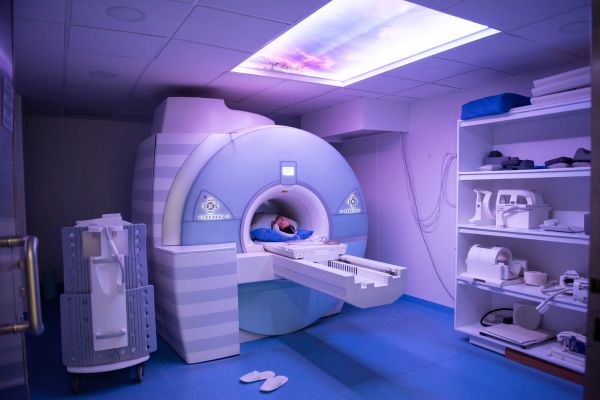Brain tumors of any sort, whether benign (noncancerous) or cancerous, can weigh down on a patient and their loved ones. When it comes to craniopharyngioma vs pituitary adenoma, both are noncancerous but affect the same region of the brain. Their benign nature means they can’t metastasize to other body parts. Still, the emotional, physical, and financial toll they bring to a patient can be just as heavy as that caused by cancerous brain tumors.
These tumors can be a serious problem if they become large, putting pressure on the vital parts of the brain, like the hypothalamus gland, pituitary gland, and optic nerves. Here, we delve deeper into craniopharyngioma and pituitary adenoma to help you understand how they differ, their symptoms, and how they can be treated.
Craniopharyngioma vs Pituitary Adenoma — What Sets Them Apart?
Okay, let’s dig into these two types of brain tumors, because on the surface, they may seem similar (same region, overlapping symptoms). But beneath these close similarities lie differences that matter a lot, especially when handling them.
Origin and Pathology
Craniopharyngioma often grows from the remnants of embryologic tissue, the craniopharyngeal duct or Rathke’s pouch remnants, along the sellar/parasellar region. This is the area around the center of the skull, the same place where the pituitary gland resides. It can take two forms: partly cystic and partly solid.
Over recent years, studies have indicated that adamantinomatous (ACP) and papillary craniopharyngioma (PCP) are molecularly distinct. ACP often shows CTNNB1 mutations, while PCP often has BRAF V600E mutations.
In contrast, pituitary adenomas develop from pituitary gland cells such as lactotrophs, corticotrophs, somatotrophs, etc. Some of these cells are “functioning,” meaning they secrete excess hormone, while others are “nonfunctioning.
This craniopharyngioma vs pituitary adenoma difference may sound academic, but it shows up in behavior. Craniopharyngiomas often invade or press on adjacent structures aggressively. Pituitary adenomas, on the other hand, often grow more gradually within or adjacent to the gland.
Growth Behavior and Recurrence
Now, here’s the twist about these brain tumors you may not expect: while craniopharyngiomas are benign, they recur more often than many pituitary adenomas. This means that even after a complete surgical removal, there’s a 20 to 40% chance of the tumor returning. Their recurrence, however, depends on how much is removed and may happen several years after the surgery.
With pituitary adenomas, many are stable for long periods, especially if they’re nonfunctioning and small. In fact, some may never need intervention beyond monitoring.
Hormonal Effects & Symptoms: Overlaps and Differences
Because both are close to the pituitary gland, endocrine effects overlap. Still, there are specific indicators that reveal the differences.
Pituitary adenomas, particularly the functioning ones, usually manifest themselves through excess hormone secretion (acromegaly), too much ACTH (Cushing’s disease), or too much prolactin (prolactinomas). Nonfunctioning adenomas have a higher tendency to cause hypopituitarism or sometimes compressive symptoms like headaches, visual field cuts, instead of hormone override.
Now, shifting to craniopharyngioma, it often causes hormone deficiency rather than excess. That’s because they damage or put pressure on the pituitary or hypothalamic connections. This means when craniopharyngiomas develop, they can cause growth hormone deficiency, hypothyroidism, adrenal insufficiency, or diabetes insipidus.
Other than these, patients may also experience visual symptoms like decreased acuity and field cuts. In fact, visual problems are very common in craniopharyngioma because they grow upwards towards the region that houses the optic nerves (optic chiasm).
In other words: if you see classic signs of hormone surplus (Cushing’s, acromegaly, prolactin excess), lean “pituitary adenoma.” If you see multiple hormone deficiencies plus vision trouble, craniopharyngioma is higher on the list.

Symptoms: When They Make Themselves Known
Craniopharyngioma vs pituitary adenoma symptoms give the telltale signs of which tumor is which. Let’s get practical, though: they often don’t reveal themselves early. In most cases, the symptoms creep in. But with several clues of how they manifest, it’s possible to identify the tumors.
Common Symptoms (Overlap Zone)
In both craniopharyngioma and pituitary adenoma cases, the following symptoms will show up, and this may make it a bit harder to know which one a patient is suffering from:
- Headache—pressure, swelling, irritation.
- Vision disturbance – This is characterized by loss of visual field (often peripheral) from compression of the optic pathways. The disturbance becomes more pronounced when the tumor starts pushing upwards towards the optic chiasm.
- Hormone imbalance – This will show in the form of fatigue, weight changes, irregular menstruation, sexual dysfunction, and growth problems.
- Neurologic symptoms – These include nausea, vomiting (due to increased intracranial pressure), behavior or mood changes, especially if the hypothalamus is involved.
All these symptoms are vague and aren’t proof enough of a specific type of brain tumor. This is why diagnosis is often delayed.
Craniopharyngioma-Specific Symptoms
Now, here are the symptoms that are specific to craniopharyngioma:
- Children may experience stunted growth, delayed puberty, and behavioral changes. These happen because the tumor interferes with endocrine growth pathways.
- Diabetes Insipidus (central DI) – This is mostly frequent in craniopharyngioma. Patients urinate a lot and feel overly thirsty.
- Hypothalamic symptoms – This symptom is characterized by problems with sleep, temperature regulation, appetite, and weight gain (Hypothalamic obesity).
Pituitary Adenoma-Specific Symptoms
For pituitary adenoma patients, the following symptoms become evident:
- Endocrine overproduction – For example, in prolactinomas (a type of pituitary gland tumor), galactorrhea (milk discharge), menstrual changes, and infertility are common.
- In GH-secreting adenomas: Acromegaly in adults is evident through enlarged hands, feet, and facial bones. In children, gigantism.
- In ACTH adenomas: Cushing’s disease is characterized by weight gain, muscle weakness, purple striae, and skin changes.
So, you’ll often see a hormonal “signature” in pituitary adenomas that’s less common in craniopharyngiomas.

Diagnosis: How Doctors Tell Them Apart
Due to the close resemblance between craniopharyngioma vs pituitary adenoma, you might wonder how doctors can tell them apart. This part is more like detective work involving imaging, lab tests, identifying patterns, and more.
Hormone Testing and Blood Work
After examining a patient and the doctor suspects they have a brain tumor, the first step is to carry out several blood tests. This helps the medical experts understand whether the tumor is driving the body to secrete excess or little of specific hormones. It might not be just one test—it’s usually a series of tests that check thyroid hormones, growth hormone, cortisol, prolactin, and reproductive hormones such as FSH and LH.
If during the test, it’s determined that one hormone is higher than normal, say growth hormone or prolactin, that narrows down to a pituitary adenoma. This may also lean more towards a “functioning” pituitary adenoma, known for actively producing hormones. But if the hormone levels are lower than usual, it can be an indicator that the tumor is damaging or pressing on the pituitary gland. This pattern is more common in craniopharyngioma, which usually causes hormone shortages.
Sometimes, the doctors may test how the body handles water balance because craniopharyngiomas can interfere with the hormone that controls urine concentration. This is what eventually leads to diabetes insipidus. Patients feel extremely thirsty and urinate more than usual. To confirm this, medical experts may conduct a water deprivation test to check the concentration of urine when fluids are limited.
Overall, hormone results narrate a story. They help doctors to rule out certain possibilities, narrow down others, and help them know whether the tumor is mainly blocking, destroying, or overproducing hormone signals.
Imaging: MRI, CT
After carrying out hormone tests and they hint that something’s not right, doctors will next do imaging through MRI and CT scans. An MRI offers the clearest view by showing soft tissues in fine detail. This is what doctors use to know whether the tumor is solid, fluid-filled, or a combination. All these point towards craniopharyngioma.
Sometimes, these tumors may have tiny calcium deposits, which light up clearly on a CT scan. Pituitary adenomas, on the other hand, are often softer and lack calcified spots. Imaging is also helpful in showing how close the tumor is to the hypothalamus and optic nerves, which is important before surgery.
Radiologists often compare results from CT and MRI scans to map out both the reach and size of the tumor. This careful mapping is what guides almost every treatment decision that will follow.

Biopsy / Surgical Pathology
Sometimes, lab tests and imaging may not be sufficient in identifying craniopharyngioma vs pituitary adenoma. In such circumstances, a surgery may be conducted to collect tissue samples and carry out analysis. This then reveals the histology, confirming the diagnosis. Also, molecular markers like BRAF mutation can help guide therapy.
Treatment Approaches: Choosing the Best Route
After establishing the type of tumor, the tough part begins: deciding the right treatment. Usually, there isn’t a single perfect path. More trade-offs than clean solutions.
Pituitary Adenoma Treatment
Doctors determine the right treatment for pituitary adenoma based on its type, size, and how it affects the patient’s body. The most recommended form of treatment is surgery, usually the transsphenoidal approach. This is where the surgeon uses the nasal passage to reach the tumor instead of opening the skull. It’s a form of minimally invasive surgery and tends to offer a much smoother recovery than invasive surgery.
Surgery isn’t always needed in all situations. Certain types of adenomas, particularly those that produce prolactin, can shrink or quiet down with just medication, such as dopamine agonists. If, after this, there are remaining tumor cells or recurrence happens later, they’re removed through radiation therapy.
The truth about pituitary adenoma treatment is that it doesn’t stop after surgery or medication. Scans, blood tests, and hormone checks follow and can be part of a patient’s life for some time. It’s not an easy journey managing all that uncertainty. But with proper care, most people regain balance and carry on with their lives as usual.
Craniopharyngioma Treatment
When it comes to treating craniopharyngioma, the process usually isn’t straightforward. That’s because the tumor sits close to the vital regions of the brain, such as the optic nerves and hypothalamus. So, removing them completely can be really challenging.
In most cases, surgeons aim for what’s called a “maximal safe resection.” This is where they take out as much tumor as possible while avoiding damage to the surrounding brain structures. And that can sometimes mean leaving behind small remnants if removing them would cause more damage than good.
Once surgery is complete, most patients are put under radiation therapy, which targets the remaining tumor cells to reduce the chances of recurrence. In some cases, doctors opt for proton beam therapy, a precise form of radiation that spares nearby healthy tissue.
Even after treatment, patients must go through follow-up care. This entails regular MRI scans, hormone checks, and endocrinologist visits to help manage the long-term effects, such as vision changes and hormonal imbalance. This can be a long process, yes, but the progress attained in treatment keeps improving the outlook year after year.
Summary
Understanding craniopharyngioma vs pituitary adenoma goes beyond just labeling two brain tumors. It’s about knowing how differently they behave, even though they develop within the same neighborhood of the brain.
Craniopharyngioma disrupts the secretion of hormones by putting pressure on the pituitary gland. Pituitary adenoma, on the other hand, leads to excess production of hormones. The treatment of these benign brain tumors, their outlooks, and long-term effects vary a lot. But both are highly manageable today through modern surgery, imaging, and thorough follow-up care.
The most important part of treatment is early detection, steady monitoring, and having a medical team that understands the tiny nuances between these two tumors.

